
Cirkit Designer
Your all-in-one circuit design IDE
Home /
Component Documentation
How to Use ME3-H2S Module: Examples, Pinouts, and Specs
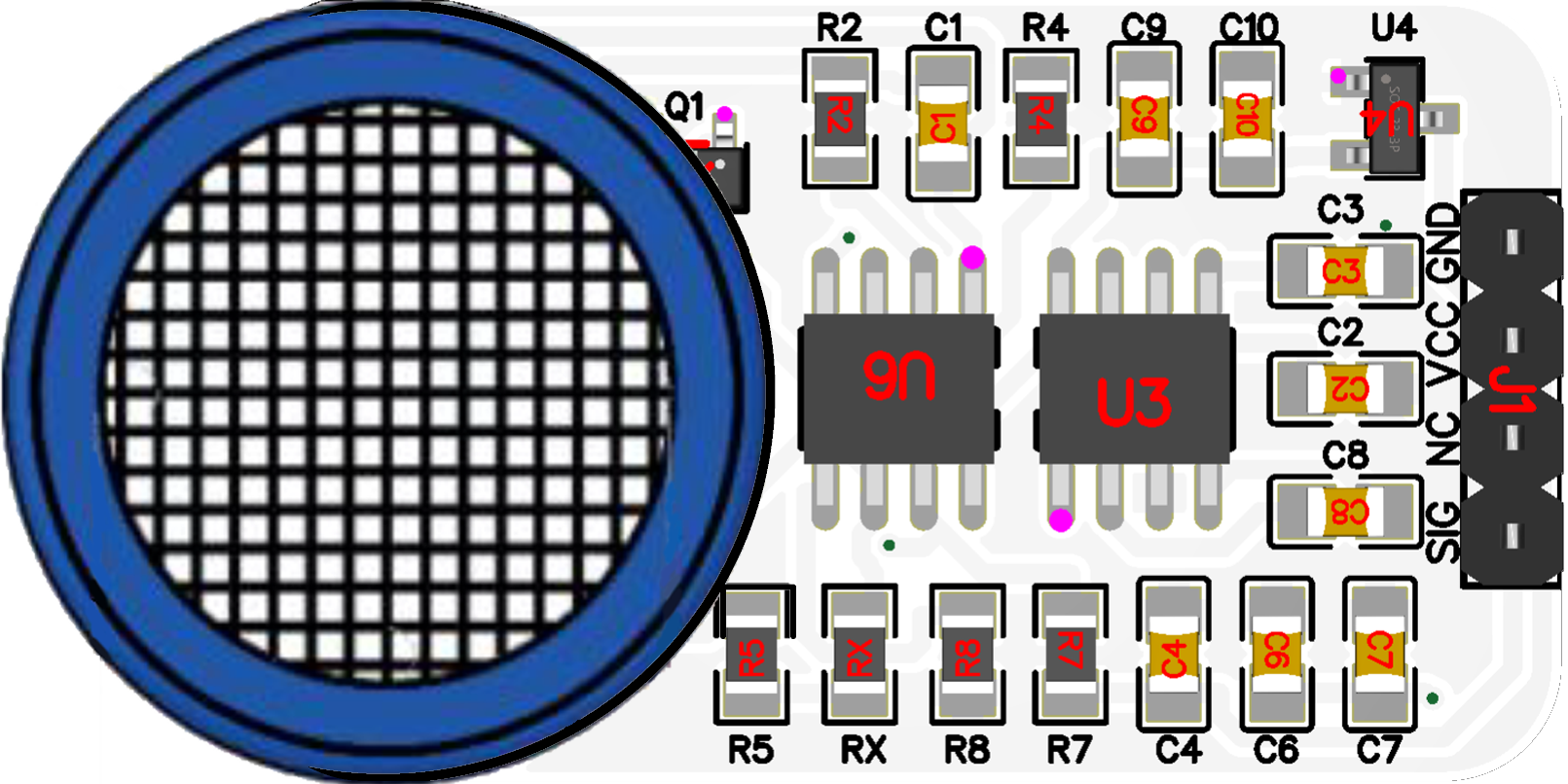
 Design with ME3-H2S Module in Cirkit Designer
Design with ME3-H2S Module in Cirkit DesignerIntroduction
The ME3-H2S Module is a gas sensor designed to detect hydrogen sulfide (H2S) concentrations in the air. This module is widely used in various applications, including industrial safety, environmental monitoring, and gas detection systems. Its high sensitivity and reliability make it an essential component for ensuring safety and compliance in environments where H2S is a concern.
Explore Projects Built with ME3-H2S Module
Solar-Powered Environmental Monitoring Station with GSM Reporting
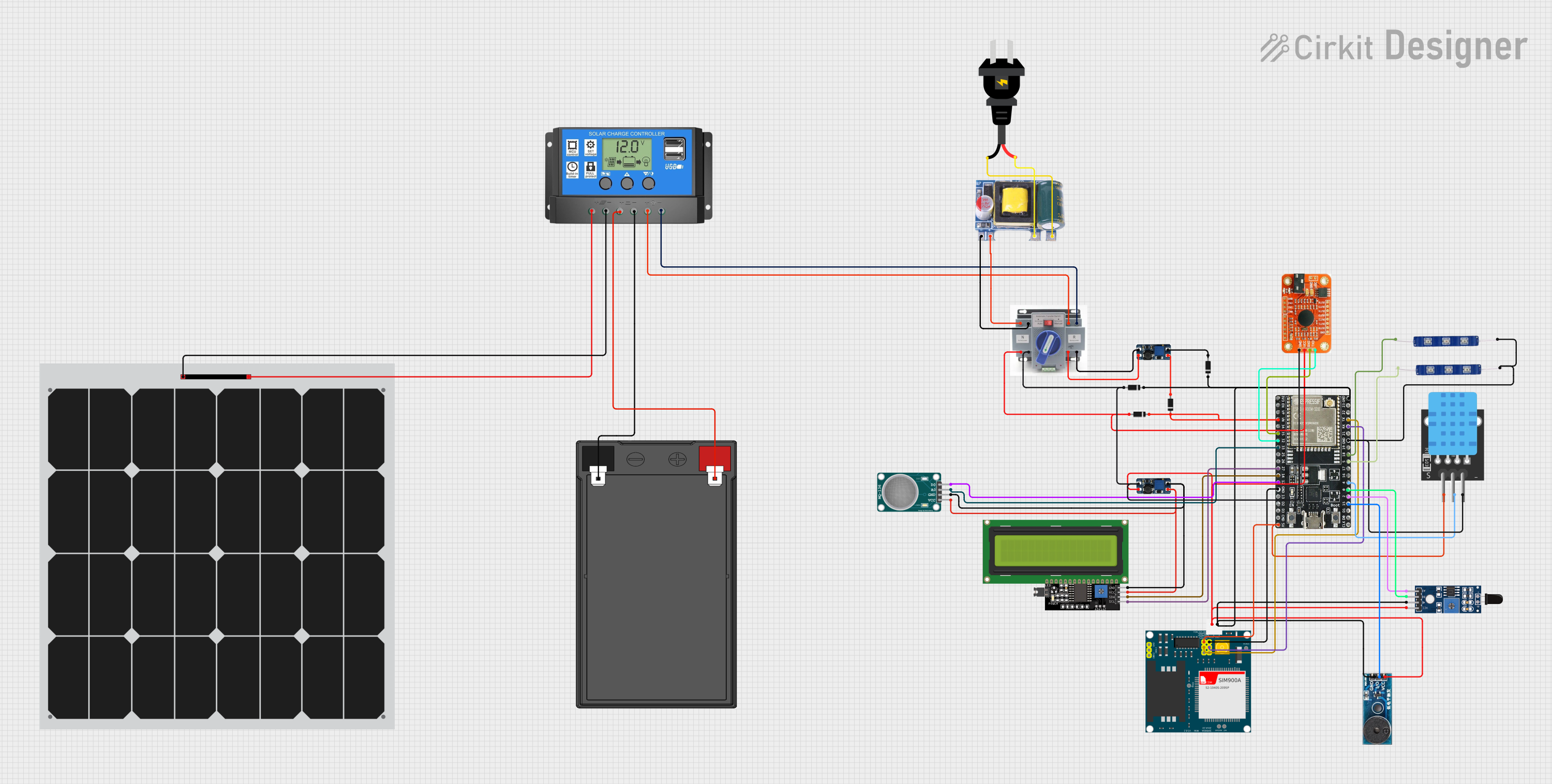
This is a solar-powered monitoring and control system with automatic power source selection, environmental sensing, and communication capabilities. It uses an ESP32 microcontroller to process inputs from gas, flame, and temperature sensors, and to manage outputs like an LCD display, LEDs, and a buzzer. The system can communicate via a SIM900A module and switch between solar and AC power sources using an ATS.
 Open Project in Cirkit Designer
Open Project in Cirkit DesignerESP32-Powered Environmental Monitoring System with SCD30, MQ-136, and Methane Sensors
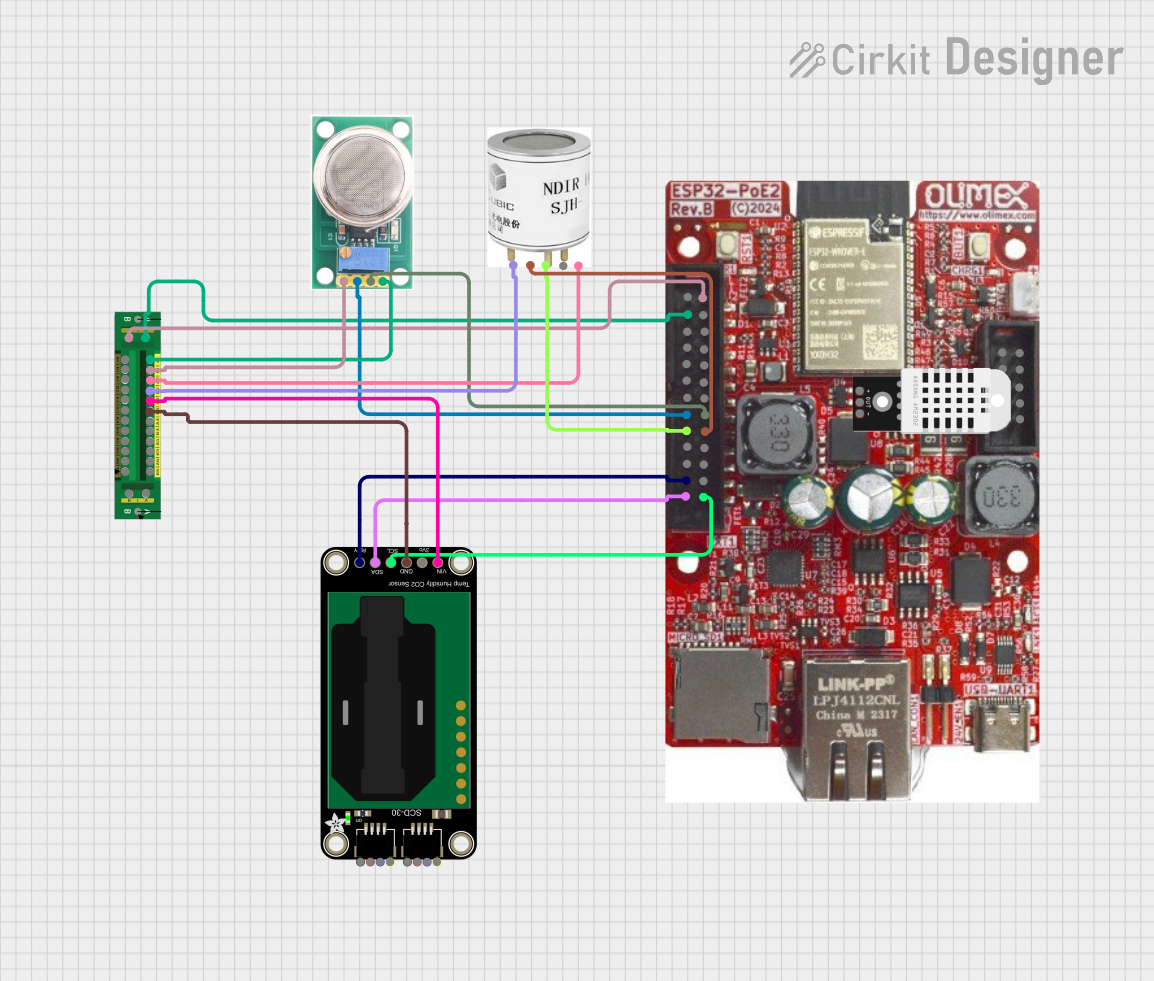
This circuit is designed for environmental monitoring, utilizing an ESP32 microcontroller to collect data from various sensors including an MQ-136 for H2S detection, an SCD30 for CO2 and humidity measurement, and an SJH-100A for methane detection. The collected data is processed and can be integrated with Home Assistant for real-time monitoring and analysis.
 Open Project in Cirkit Designer
Open Project in Cirkit DesignerESP32-Based Smart Irrigation and Environmental Monitoring System
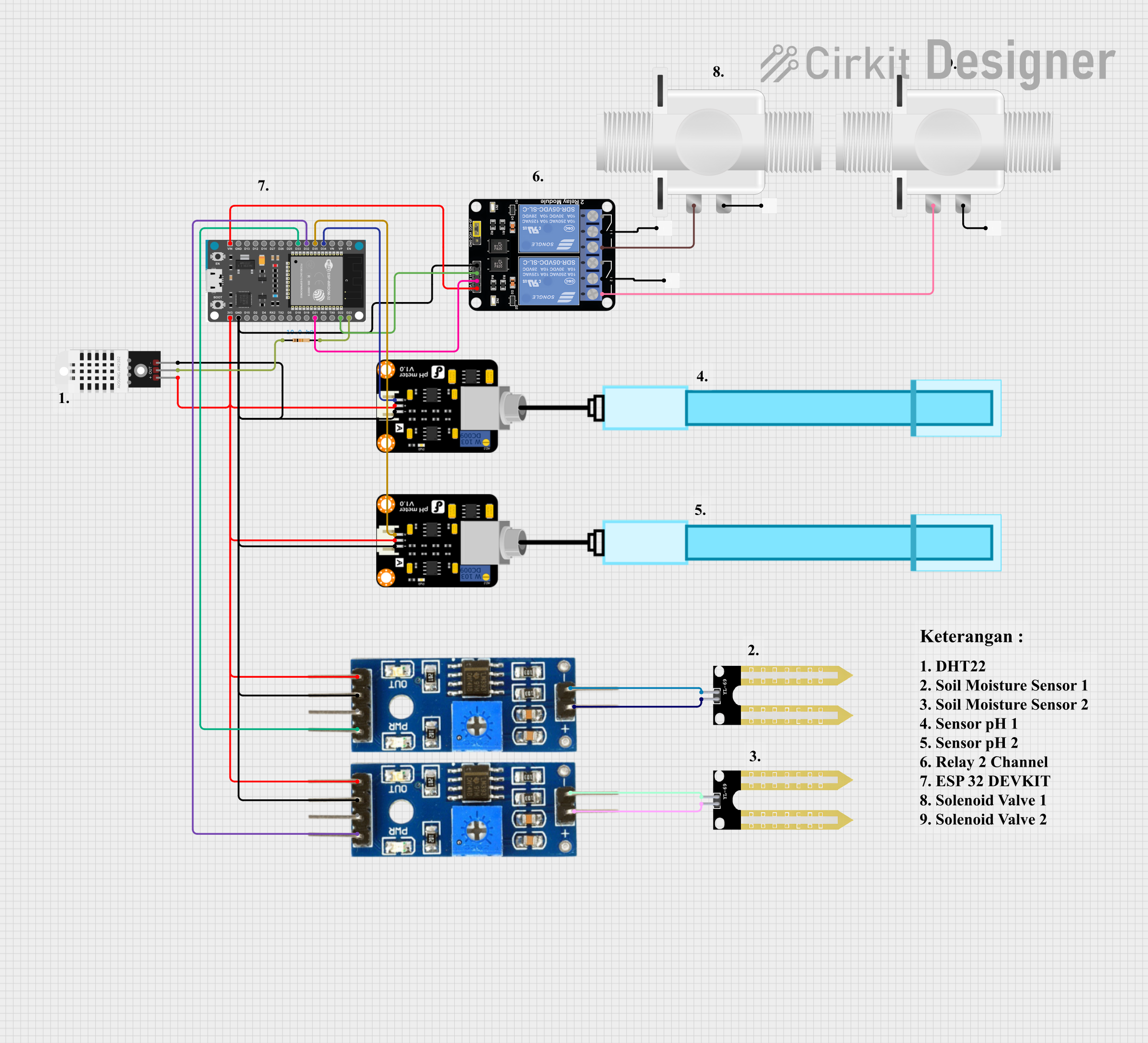
This is an automated environmental control system for plant growth that uses an ESP32 to monitor soil moisture and pH levels, and to manage irrigation through solenoid valves. The system aims to maintain optimal growing conditions by adjusting watering schedules based on sensor inputs.
 Open Project in Cirkit Designer
Open Project in Cirkit DesignerESP8266 NodeMCU-Based Environmental Monitoring System with SIM900A GSM Communication
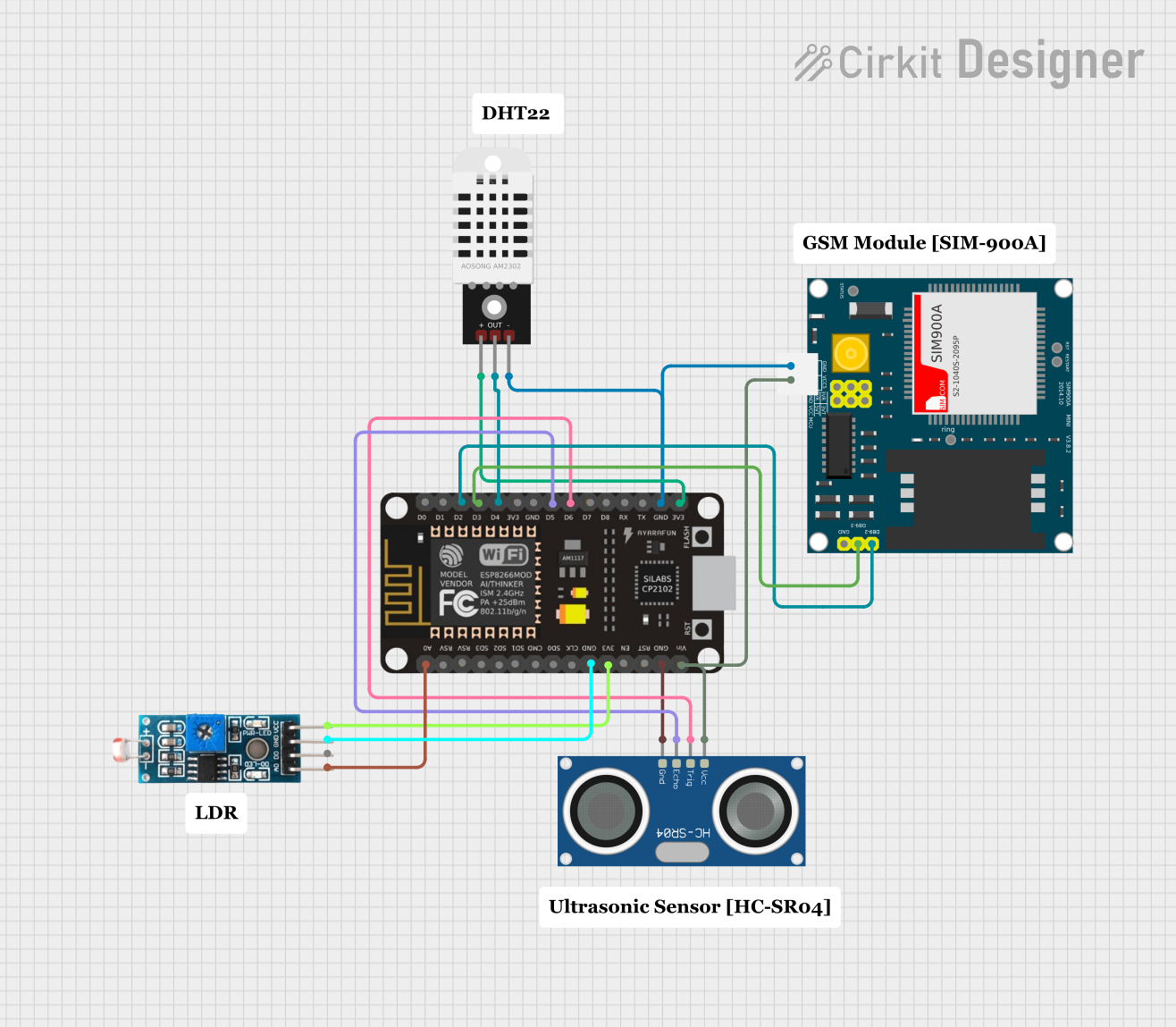
This is a sensor-based data acquisition system with GSM communication capability. It uses an ESP8266 NodeMCU to collect environmental data from a DHT22 sensor and light levels from an LDR, as well as distance measurements from an HC-SR04 ultrasonic sensor. The SIM900A GSM module enables the system to transmit the collected data over a cellular network.
 Open Project in Cirkit Designer
Open Project in Cirkit DesignerExplore Projects Built with ME3-H2S Module

Solar-Powered Environmental Monitoring Station with GSM Reporting
This is a solar-powered monitoring and control system with automatic power source selection, environmental sensing, and communication capabilities. It uses an ESP32 microcontroller to process inputs from gas, flame, and temperature sensors, and to manage outputs like an LCD display, LEDs, and a buzzer. The system can communicate via a SIM900A module and switch between solar and AC power sources using an ATS.
 Open Project in Cirkit Designer
Open Project in Cirkit Designer
ESP32-Powered Environmental Monitoring System with SCD30, MQ-136, and Methane Sensors
This circuit is designed for environmental monitoring, utilizing an ESP32 microcontroller to collect data from various sensors including an MQ-136 for H2S detection, an SCD30 for CO2 and humidity measurement, and an SJH-100A for methane detection. The collected data is processed and can be integrated with Home Assistant for real-time monitoring and analysis.
 Open Project in Cirkit Designer
Open Project in Cirkit Designer
ESP32-Based Smart Irrigation and Environmental Monitoring System
This is an automated environmental control system for plant growth that uses an ESP32 to monitor soil moisture and pH levels, and to manage irrigation through solenoid valves. The system aims to maintain optimal growing conditions by adjusting watering schedules based on sensor inputs.
 Open Project in Cirkit Designer
Open Project in Cirkit Designer
ESP8266 NodeMCU-Based Environmental Monitoring System with SIM900A GSM Communication
This is a sensor-based data acquisition system with GSM communication capability. It uses an ESP8266 NodeMCU to collect environmental data from a DHT22 sensor and light levels from an LDR, as well as distance measurements from an HC-SR04 ultrasonic sensor. The SIM900A GSM module enables the system to transmit the collected data over a cellular network.
 Open Project in Cirkit Designer
Open Project in Cirkit DesignerTechnical Specifications
Key Technical Details
| Parameter | Value |
|---|---|
| Detection Gas | Hydrogen Sulfide (H2S) |
| Detection Range | 0 - 100 ppm |
| Sensitivity | 0.05 - 0.5 µA/ppm |
| Response Time | ≤ 30 seconds |
| Operating Voltage | 5V DC |
| Operating Current | ≤ 10 mA |
| Operating Temperature | -20°C to 50°C |
| Humidity Range | 15% - 90% RH (non-condensing) |
Pin Configuration and Descriptions
| Pin Number | Pin Name | Description |
|---|---|---|
| 1 | VCC | Power supply (5V DC) |
| 2 | GND | Ground |
| 3 | AOUT | Analog output signal |
| 4 | DOUT | Digital output signal (threshold) |
Usage Instructions
How to Use the Component in a Circuit
- Power Supply: Connect the VCC pin to a 5V DC power supply and the GND pin to the ground of your circuit.
- Analog Output: Connect the AOUT pin to an analog input pin on your microcontroller (e.g., Arduino UNO) to read the H2S concentration as an analog voltage.
- Digital Output: Connect the DOUT pin to a digital input pin on your microcontroller to receive a high/low signal based on a preset threshold.
Important Considerations and Best Practices
- Calibration: Ensure the sensor is calibrated in a clean air environment before use.
- Warm-Up Time: Allow the sensor to warm up for at least 5 minutes before taking readings.
- Ventilation: Ensure proper ventilation around the sensor to avoid false readings due to stagnant air.
- Avoid Contaminants: Keep the sensor away from contaminants such as silicone vapors, which can affect its performance.
Sample Arduino Code
// ME3-H2S Module with Arduino UNO
const int analogPin = A0; // Analog input pin for AOUT
const int digitalPin = 2; // Digital input pin for DOUT
void setup() {
Serial.begin(9600); // Initialize serial communication
pinMode(digitalPin, INPUT); // Set digital pin as input
}
void loop() {
int analogValue = analogRead(analogPin); // Read analog value from AOUT
int digitalValue = digitalRead(digitalPin); // Read digital value from DOUT
// Convert analog value to voltage (assuming 5V reference)
float voltage = analogValue * (5.0 / 1023.0);
// Print the values to the Serial Monitor
Serial.print("Analog Value: ");
Serial.print(analogValue);
Serial.print(" | Voltage: ");
Serial.print(voltage);
Serial.print("V | Digital Value: ");
Serial.println(digitalValue);
delay(1000); // Wait for 1 second before next reading
}
Troubleshooting and FAQs
Common Issues Users Might Face
- No Output Signal: Ensure the power supply is connected correctly and the sensor is receiving 5V DC.
- Inaccurate Readings: Calibrate the sensor in a clean air environment and ensure proper ventilation.
- Slow Response Time: Allow the sensor to warm up for at least 5 minutes before taking readings.
Solutions and Tips for Troubleshooting
- Check Connections: Verify all connections are secure and correct.
- Power Supply: Ensure the power supply is stable and within the specified voltage range.
- Sensor Placement: Place the sensor in an area with good airflow to avoid stagnant air affecting the readings.
- Calibration: Regularly calibrate the sensor to maintain accuracy.
By following this documentation, users can effectively integrate the ME3-H2S Module into their projects, ensuring accurate and reliable detection of hydrogen sulfide gas.